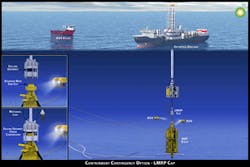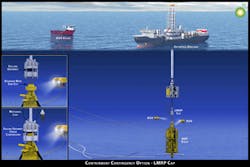Heavy-Duty Pumps Move Sludge Cake at Massive WWTP
At the Detroit Wastewater Treatment Plant (WWTP), a pair of heavy-duty pumps is used to move high solids-content cake from the dewatering operation to either incineration or a truck loading area. In the process, the pumps push the dewatered sludge more than 500 linear feet and up five stories.
The pair of Schwing Bioset KSP 110VXL pumps move better than 100 wet tons of dewatered material per hour, have improved the efficiency of the incineration and haul-off operations, and have proven a key part of the system.
The first thing that strikes visitors upon arrival at Detroit's WWTP is its sheer size. Covering several city blocks, the plant is the largest single-site wastewater treatment facility in the United States, with the ability to process approximately 845 million gallons per day through secondary treatment. The facility has undergone a number of major expansions since it was first built in 1940. The most recent of the major upgrades took place in 2004 when, according to Kenneth Paylor, Detroit WWTP's Senior Maintenance Foreman (Solids), modifications to solids processing were included in the overall plan.
"One of the biggest changes that impacted this area of the plant was the addition of a Central Offload Facility (COF). Up to that time, dewatered cake was taken by conveyor to a lime pad that was used to support land application for the biosolids. When that land use was discontinued, however, an alternative was needed. The COF, essentially a truck loading area to transfer biosolids to area landfills for disposal, is now that alternative."
The Detroit WWTP relies on 10 centrifuges and 22 belt presses to dewater its sludge prior to incineration or off-site disposal. Material exiting the presses has a solids content of about 23-27%; out of the centrifuges it can be in the 27-32% range.
Detroit operates 14 incinerators located in two separate solids buildings, identified as Complex 1 and Complex 2 (C1 and C2). When the plant generates more solids than the incinerators can handle, the excess is pumped to the offload facility.
"That is when the Schwing Bioset pumps come into play: getting the cake from the belt presses in C1 to the COF where it can be treated with lime for odor control and loaded into trucks," Paylor said
Long Haul
"To get material to the sludge pumps, which are located in the lowest level of the facility, a belt conveyor first collects the cake from all 10 belt presses in C1," Paylor said. "That belt feeds a Schwing push floor, which, in turn, feeds the two KSP 110VXL pumps."
Using a max pressure of 1,400 psi, cake is pumped in high-pressure piping out to the COF. According to Keith McWilliams, Detroit's Plant Supervisor, the distance from the C1 pumps to the COF is in excess of 500 feet.
"Material first has to go up five stories–that's 60-70 feet alone," he said. "Then it has to make its way over to the facility, so 500 linear feet is probably a conservative guess."
Ongoing Changes
Detroit WWTP has seen its share of changes over the years, and new approaches to dealing with the biosolids are always under consideration. The city has, for some time now, been looking into the feasibility of using its biosolids as a fuel source to produce either steam or electricity. Also being considered are additional fluid bed incinerators at the WWTP to handle the balance of the solids–that portion which is currently landfilled. WW
Schwing Bioset is an exhibitor at the WEFTEC.10 event and can be found at Booth No. 6129More WaterWorld Current Issue Articles
More WaterWorld Archives Issue Articles

